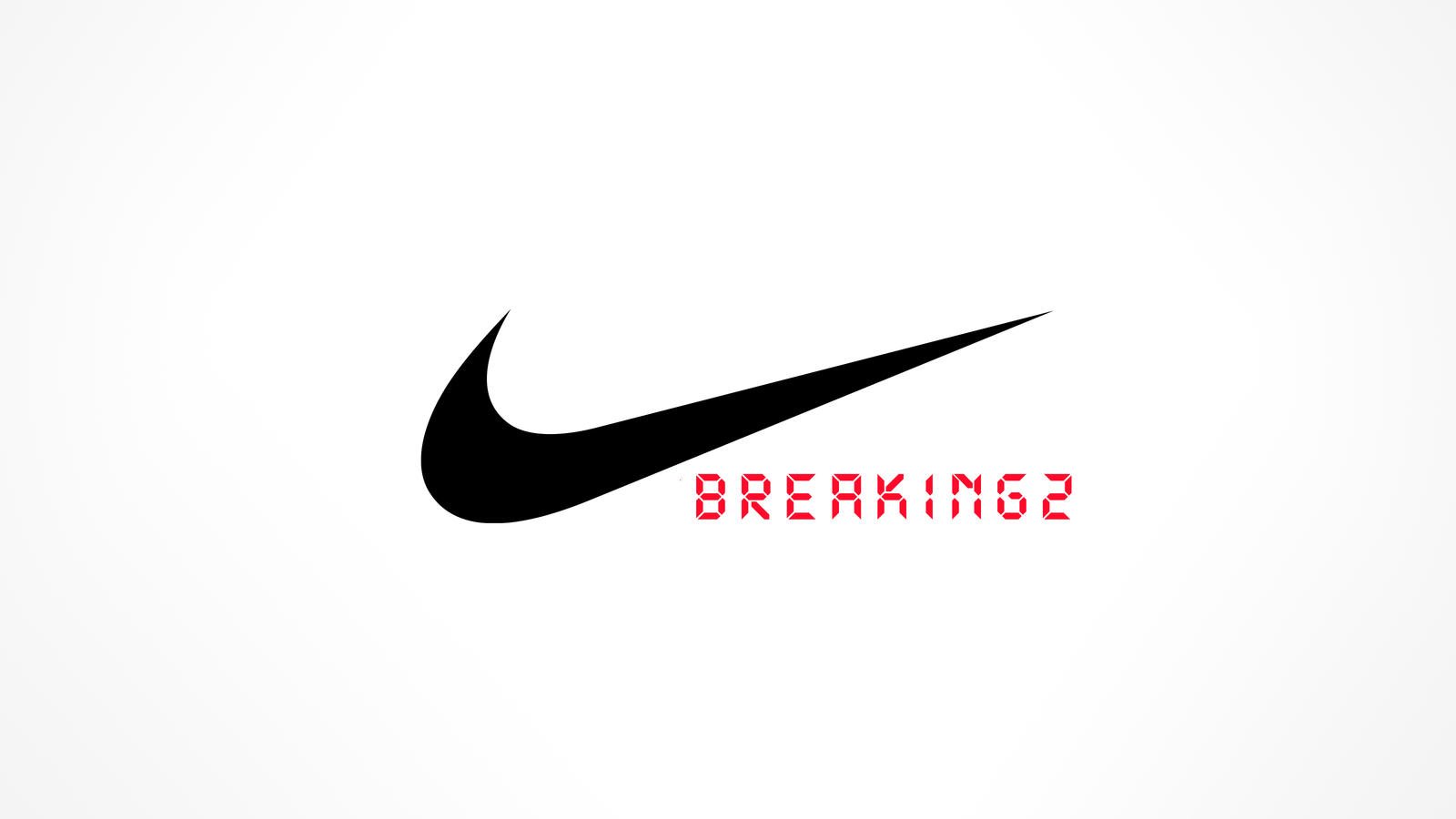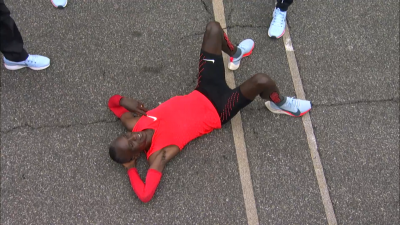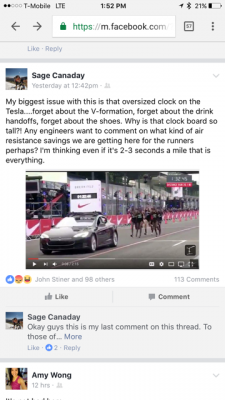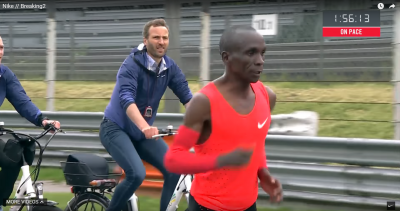Was Eliud Kipchoge’s 2:00:25 A Monumental Step Forward In Marathoning? No, It Was Not – We Still Are 20+ Years Away From A Legitimate Sub-2 Marathon
by Robert Johnson
May 16, 2017
(Editor’s note: As a counterpoint to this column, we’ve published a guest column written by Dr. Michael Joyner: Kipchoge’s Run & What Might (or Might Not) Happen Next. Dr. Joyner is an anesthesiologist, physiologist and human performance expert at the Mayor Clinic, who famously published a paper in 1991 predicting a human could eventually run a marathon as fast at 1:57:58).
A week and a half ago, Eliud Kipchoge put forth another brilliant performance over the 26.2-mile distance. In the end, he failed to break 2:00:00 and ran 2:00:25. Two confessions: 1) I celebrated a little when I finally became 100% convinced that Kipchoge wouldn’t be breaking 2:00:00 as my professional credibility was on the line and; 2) Kipchoge held up much better than I thought he would.
As for how could I root for one of the world’s most impressive athletes to come up short of his goal, I had a lot of professional credibility tied up in my prediction he would come up short, and I wanted to see the first sub-2 hour marathon in more traditional conditions.
In case you don’t know my history, four years ago, I wrote a column (that, in a weird coincidence, was published exactly four years before Kipchoge’s sub-2 attempt) entitled, “The Myth Of The Sub-2-Hour Marathon,” where I said despite all of the talk of a sub-2 marathon in the popular press, I believed we were nowhere near a sub-2 hour marathon. Here is what I wrote four years ago:
“(A sub-2) probably won’t happen in my lifetime and I’m 39. There’s zero chance it happens before I’m 50 (2023). I’d be willing to bet anyone all of my eventual monthly social security checks I’ll get in 25 years that it hasn’t happened by the time I’m 65 (2038) as well.”
Considering that Kipchoge just ran 2:00:25, I imagine many people think I must be regretting writing that column. That’s not the case. If I was going to rewrite that statement today, I wouldn’t change too much of it. Here is how it would read:
“(A sub-2 in a real race) may not happen in my lifetime and I’m 43. There’s zero chance it happens in a legitimate race before I’m 50 (2023). If I wasn’t risk-averse, I’d be willing to bet anyone all of my eventual monthly social security checks I’ll get in 21+ years that it hasn’t happened by the time I’m 65 (2038) in a legitimate race as well.”
Now I know what you are saying: “But how can that be? Kipchoge almost broke 2:00:00.”
Kipchoge didn’t almost break 2 hours in a legitimate marathon, which is what I was writing about at the time. And the more time that I’ve had to process what happened in the sub-2 attempt, even if much of that processing is simply reading what people smarter than myself have written, the more I feel like we didn’t really witness a major breakthrough. Now that some time has passed and the emotions have died down a little (when I tweeted out that Kipchoge wouldn’t be breaking 2:00 with 8 minutes left in the race and that LetsRun.com had been proven correct, some people became irate as many were clearly emotionally invested and rooting for him), let me explain why.
The major reason I feel like we didn’t see a major breakthrough on May 6 is because it’s become clear to me that the major drop in time had nothing to do with people from Nike tinkering with his training (the workout LetsRun.com observed was cool but nothing ground breaking), his hydration (it was reported Nike didn’t know what Kipchoge drank during the race) or his shoes. No, the vast majority of the 2:32 time gain from the official 2:02:57 world record came from the fact that Kipchoge ran in the slipstream of a pace car with huge wind-breaking scoreboard on top of it.
You know that green laser that was coming off the back of the pace car? I imagine most people believe that was showing the runners the 2-hour pace to run. That’s not the case. The green laser was there to show the pacers how close to run to the Tesla pace car (and give them the proper formation).
Dutch scientist Hans van Dijkk and Dutch engineer Ron van Megen have done an analysis of how much drafting behind the car was worth to Kipchoge and estimated that the if Kipchoge had the standard pacing available to someone running in Berlin, he would have run 2:02:18. Sports scientist Ross Tucker has written a very detailed 3,000+ word analysis that is a little more generous and says Kipchoge might have been capable of 2:01:40 in Berlin. LetsRun.com’s own resident wind expert John Kellogg, who has spent much of the past decade cycling, thought the car pacing might be worth more than 5 seconds per mile (2 minutes and 10 seconds over a marathon).
Split the difference between the first two estimates and you get basically 2:02 flat and that means we didn’t really witness a breakthrough at all in Monza (and I’m not even adding in the extra seconds Kipchoge gained running in shoes that were potentially superior to what prior athletes had access to, not having to slow for any water stops and not having to make any sharp turns).
Does that really change what we thought was humanly possible? No, it does not.
Eliud Kipchoge was spectacular in Monza, but given that his effort probably wasn’t worth much faster than 2:02 flat on a legitimate course, we really didn’t witness a breakthrough that puts us on the cusp of a sub-2 in a legitimate marathon anytime soon.
Noted sub-2 optimist Dr. Michael Joyner, a human performance expert at the Mayor Clinic who wrote a paper in 1991 predicting a human could eventually run a marathon as fast at 1:57:58, clearly thinks differently. After Kipchoge’s race, he said the following to the New York Times, “In a bigger field, I think it will happen; it increases the odds of more than one person having the day of a lifetime. Kipchoge, I think, was remarkable. I don’t think this was a failure at all. I’m very encouraged. I think they got in Secretariat zone.”
(Editor’s note: Dr. Joyner has graciously written a guest column for LetsRun.com that is published here: Kipchoge’s Run & What Might (or Might Not) Happen Next)
I disagree. Having more people attempt something like this isn’t going to increase the odds. Eliud Kipchoge is the Secretariat of the marathon. He’s already significantly better than everyone else in the history of the marathon. So if he can’t do it, no one else can. I do like the horse racing analogy, but the name that might provide a better illustration of where we are in terms of sub-2 is Affirmed. Affirmed won the Triple Crown in 1978. No one else won the Triple Crown until American Pharoah did it in 2015. The wait was 37 years. It might take that long for us to see a sub-2 hour marathon in a legitimate race with normal pacing.
To try to convince you why that’s the case, I think it’s best if we take the emotion related to sub-2 out of the analysis and instead look at the 5,000 and 10,000 world records. For a long time, the marathon world record was WAY behind the 5,000 and 10,000 on the equivalency charts. Only recently did it catch up once more of the top Kenyan and Ethiopian talents began turning to the marathon. Going by John Kellogg‘s equivalency charts, which were written in 1998, the 2:02:57 marathon world record is now better than the 5k and 10k WRs (he has the current 5k and 10k WRs equal to about a 2:03:20 in the marathon).
But the 5,000 and 10,000 world records haven’t been threatened in years. Since 1997, the 5000 world record has come down just 2.39 seconds (.31%). Since 1997, the 10,000 world record has come down just 10.32 seconds (.65%). Even if a superhuman like Kipchoge is capable of running 2:02 flat right now in a legitimate marathon, that means we need someone 1.64% better than him to run 2:00:00. That’s a monumental improvement and one we haven’t seen in distance running since Haile Gebrselassie lowered the 5,000 mark by 2.4% and the 10,000 by 1.8%.
My belief is Gebrselassie’s improvement was the result of the fact that we finally had the world’s best distance runners (the East Africans) training full-time with top-notch coaching when the sport was in the fully professional era. We aren’t going to have a big change like that moving forward.
The sub-2 attempt in Monza really just confirmed three things we already knew.
1) On a good day, Eliud Kipchoge is 45 seconds to 1 minute better than anyone else in the world at the 26.2-mile distance.
Even while I greatly enjoyed the spectacle, I’m not sure we needed a two-hour infomercial from Nike to prove the point that Kipchoge is capable of a 2:02 flat in Berlin as Kipchoge already proved this to be the case twice last year. At the 2016 London Marathon – the hardest marathon in the world to win – he won by 46 seconds. Four months later, he won the Olympics by 70 seconds. Before the race, it wouldn’t have been a crazy stretch to think he could run 2:02 flat in Berlin if everything broke perfectly right and that’s pretty much still what I’m thinking now that the sub-2 attempt is over.
2) Nike is brilliant at marketing.
Much of the world thinks what they saw a week and a half ago was a brilliant breakthrough orchestrated by a bunch of innovators at Nike. Unless you consider putting a clock on top of a pace car a brilliant breakthrough, that’s not what you witnessed.
Check out what Ross Tucker had to say about the science being espoused on the broadcast:
Certainly, if the coverage and the self-indulgent inserts were anything to go by, not much Nike says should be taken at face value – the degree of nonsense science and garbage being professed was mind-boggling. It was like a homeopathy lesson applied to physiology for 2 hours. That’s especially true for some of the hydration/energy non-science they were spouting. It made me think that Kipchoge succeeded despite the project’s physiology. Its engineering, perhaps, had a bigger influence.
Since the race has concluded, we’ve learned one surprising fact. Runner’s World’s Alex Hutchinson revealed that the guys and gals in the lab coats at Nike didn’t even know what fuel Kipchoge was drinking during the Breaking2 event (they specifically said he wasn’t drinking Maurten’s Drink Mix 320, which is what he says he drank).
If so, that likely rules out some breakthrough in fueling as the key to his success, and puts a damper on the idea that the Nike scientists came up with some huge breakthrough in the marathon.
Seeing what Eliud Kipchoge could do with much better pacing and drafting was cool in its own right. Why do we have to believe that there has been some radical breakthrough in the marathon in the last 6 months?
3) No, one, not even Nike, knows how to properly broadcast a marathon.
It amazes me that every single major marathon in the world doesn’t do at least the following on their broadcast.
i) Show every mile split.
ii) Show a halfway split.
iii) Show the absolute most important thing happening in the race.
In most major marathons, the most important event of the race is “the break.” When does the eventual winner break free of the chase pack? It amazes us what percent of World Marathon Major broadcasts miss “the break.”
In the 26.2 mile exhibition in Italy, the most important thing was the sub-2 pace – was Kipchoge ahead or behind pace? Yet Nike the broadcast hardly ever revealed splits to indicate if he was on pace during the broadcast. In every other sporting event we watch, the score is shown in a graphic that is visible for the entire contest. In marathoning, mile splits are the equivalent of the score and not one of them was shown.
Most viewers mistakenly just assumed if he was near the green laser everything was fine. We should have, at a minimum, been given every single mile split. Since Nike had timing mats every 200 meters, km by km splits would have been better but instead they never showed a single mile or km split. The only showed 5km splits.
Yes, occasionally, below the clock in the upper right-hand corner they had a caption that said “On pace” but that clearly wasn’t always accurate – check out this screenshot from the broadcast, some 1:56:13 into the time trial, when Kipchoge had already fallen off the pace. Look at the upper right hand corner.
Then at the end, Nike did something totally unbelievable. Some 1:59:15 into the race, just 45 seconds from the 2-hour mark, they took the clock off the screen.
Disappointing, as the whole point of this thing was to see how close he could run.
While the commentators had twice said in the final 10 minutes in hushed tones that he was behind 2:00:00 pace, they had also said they thought he could still kick it in and break 2:00:00. They told us they thought it was still possible even after they told us, almost as an aside, that some 1:57:17 into the attempt he was on 2:00:23 pace.
(Most astute viewers likely knew the sub-2 attempt was over even if the commentators didn’t. We called it over with more than a mile and a half left. At 41k, he would have had to run 4:04 mile pace to the finish to get 1:59:59. Even from 40k to the finish, it would have required 4:20 mile pace)
I’m still fully confident we’re not going to see a sub-2 hour marathon in a legitimate marathon anytime soon. Yes, I know Nike has issued a statement saying they don’t think the drafting behind the car/clock helped Kipchoge at all. Then why have a car with a huge clock right in front of Kipchoge? If I’ve got the option of believing a bunch of experts who aren’t financially tied into the event or Nike, I’m going to go with the unbiased experts – not the corporation that just invested millions in the project. To show you how much confidence I have in my belief that the lack of wind in Monza was the main reason for Kipchoge’s time, I’ll use the same tactic that Alex Hutchinson used in Runner’s World before the sub-2 attempt. Right now, I’m willing to bet anyone that wants $1,000 that Kipchoge doesn’t break 2:02 flat in Berlin this fall. If you want to bet but are worried about the weather, I’ll give you the option of pulling out of the bet 24 hours before the race is run but the time to beat under that scenario is instead 2:01:40.
PS. I will give the sub-2 exhibition a lot of credit for one big thing. It made the world appreciate the importance of a) even pacing and b) wind-breaking in record attempts. If we want to re-write the rule books so that world record attempts can be run directly behind cars (and if we’re doing that, why not put cars with shields on all sides of the runners?), then we’ll have to come up with a whole new set of WRs. But that is already under consideration because many of the current world records were set with less stringent drug testing. Plus given how tired I am of seeing poorly rabbitted races in Europe, it might be doubly good for the sport. Maybe once per every DL event, we have a rabbitted race where an automobile sets the pace and breaks the wind. Then it will be blatantly obvious to everyone that what we are watching is a neatly choreographed time trial, not race.
More: Guest Column by Dr. Micahel Joyner: Kipchoge’s Run & What Might (or Might Not) Happen Next
Talk about the two columns on our fan forum / messageboard. MB: Dr. Michael Joyner and LetsRun’s Robert Johnson share their thoughts on what Eliud Kipchoge’s 2:00:25 means.
Note from LetsRun.com’s Weldon Johnson: After reading this piece and Dr. Michael Joyner’s counter piece, I don’t think they are crazily different. Robert seems to think Kipchoge can run 2:02:15 or so under current Berlin Marathon conditions. Joyner thinks someone can run 2:01:30 or so on the right course, with a ton of competition, on the right day (different conditions than Robert is proposing). They have slightly different starting points of where we are at, and then presumably differ on how much we can improve going forward.






